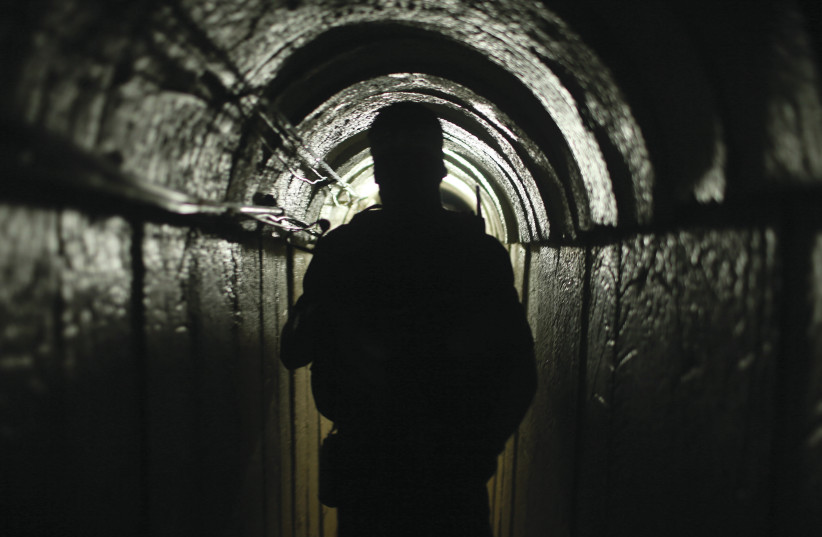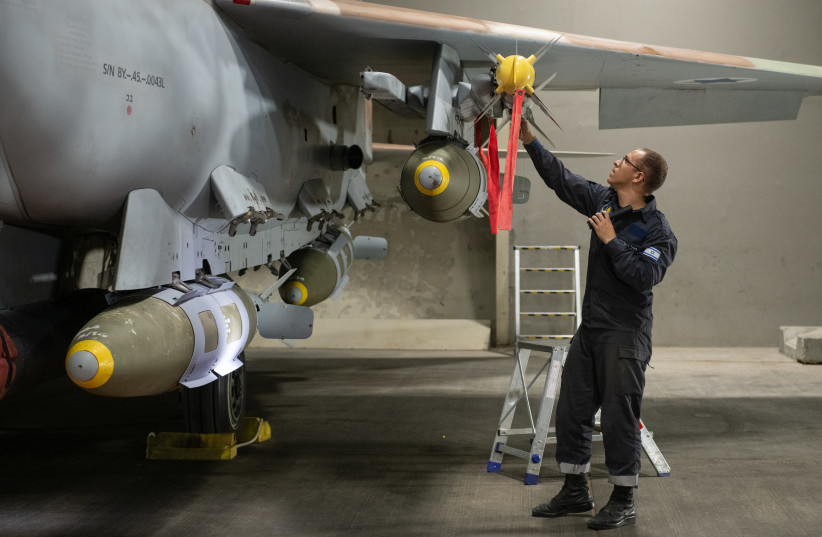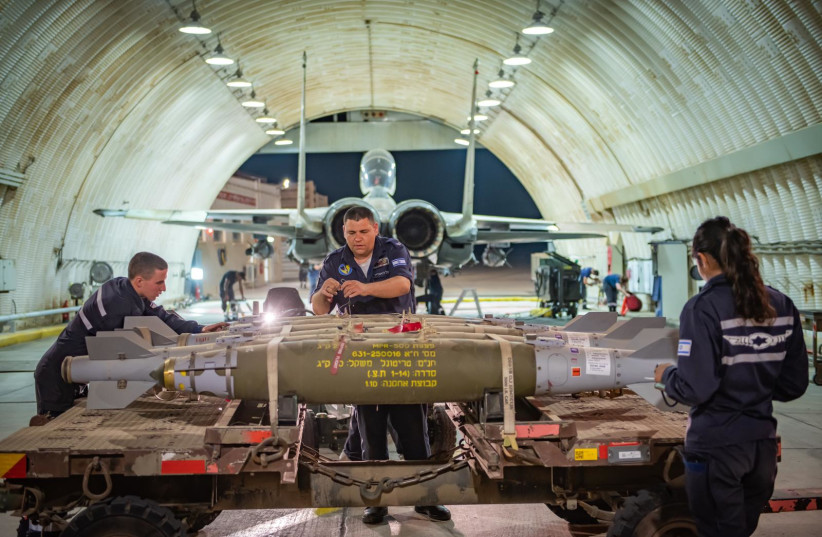Kαι Πάλι… Ξεχασμένα! Τί Γίνεται τελικά;
1.
Arab spy chiefs found an inner circle in Cairo, embrace Syria with US nod
A group of Arab intelligence directors got together for a secret rendezvous in Cairo last week, DEBKAfile’s sources reveal. The project was initiated by the US CIA and Egypt’s president Abdel Fateh El-Sisi. Prominent as a special guest was Syria’s Maj. Gen. Hussam Luka (see photo), who is currently President Bashar Assad’s favorite intelligence persona.
The meeting kicked off the foundation of a club of Arab intelligence chiefs to be followed up in the coming months.
Although the Americans were involved, Israel was not given a look-in on the project. Its initial purpose, our sources reveal, was to bring together the head of Saudi General Intelligence Khaled Al-Humaiden and his Syrian counterpart, after a decade-long disconnect. It signaled a step towards mending the rift between the royal house in Riyadh headed by Crown Prince Muhammed bin Salman and the Bashar Assad regime over the atrocities committed by the latter in Syria’s bloody civil war.
The Syrian dictator is clearly emerging from the role of pariah he held in the Arab world and his return to the fold. Last Saturday, the United Arab Emirates foreign minister Sheikh Abdullah bin Zayed visited Damascus. He was closeted for some hours with Assad, and then flew to Amman to meet with Jordan’s King Abdullah. There is talk in Arab capitals of inviting the Syrian president to the next Arab summit taking place in Algiers in March 2022.
Clearly underway is an Arab-US move to restore the Syrian ruler to the role he held prior to the outbreak of the 2011 civil war. The Iranians are likely rubbing their hands in glee over their ally’s return to Arab good books, without him being forced to abandon their alliance. The change of heart on the part of the Saudis and Emiratis is seen as signaling a shift away from the Abraham Accords which normalized their ties with Israel and aligned them against Tehran.
It is therefore worthy of note that Israel has been isolated from the ongoing inter-Arab process, advance word of which was first revealed on Oct. 11 by DEBKAfile’s Washington sources. (US shifts towards accepting Assad regime. Israel caught unawares). Its potential repercussions are still not appreciated in Jerusalem.
A State Department source put it this way: “Whereas the Biden administration is not prepared to open its arms [to restoring Assad to the Arab fold], it is definitely not averse to leaving the door open for other so do so.”
The Bennett-Lapid government still appears to be deaf to the momentous shift of ground afoot around Israel. No fresh initiatives are in sight other than the routine bashing of Iran’s military infrastructure in Syria.
2.
Libyan presidential contender offers Israel recognition for backing

A high-ranking Israeli security official paid a secret visit to Tripoli in the last week of August as guest of Col. Saddam Haftar, son of Libyan National Army chief, Maj. Gen, Khalif Haftar, US intelligence sources report.
Saddam Haftar is campaigning for president of Libya in the Dec. 2021 election against Seif al-Islam Qaddafi (see picture), the son of late Muammar Qaddafi, who was deposed in a NATO-led, US-backed military operation a decade ago. When the Israeli emissary sat down with Haftar’s son, the latter’s rival Qaddafi junior was being received in Moscow by President Vladimir Putin. He was asking for Russian support for his presidential run, although Russian Wagner Group mercenaries had backed the opposition’s battle for control of Tripoli.
Israel was urged by Egyptian President Abdel-Fatteh El-Sisi and UAE ruler Sheikh Muhammed al Zayed to join their coalition in support of Gen, Haftar’s fight to capture Tripoli as well as their backing for his son’s bid for the presidency. Cairo supplies him with weapons and air force operations, while the UAE has provided special forces units and a small fighter squadron.
When Gen. Hafter visited Cairo on Aug. 11, he not only talked with president Sisi but also met US ambassador Richard Norland. Roping Israel into the pro-Haftar coalition was discussed in the first interview. In the second, the general tried to assess the chances of pulling the US away from its support of Abdelhamid Dabaiba’s .transitional government in Tripoli. US air strikes in recent months aimed at stalling the Haftar army’s long battle for breaking through to the seizure of Tripoli.
Col Saddam Hafter, according to his confidants, made his Israeli visitor an offer; If he made it to president, Libya would establish normal relations with Israel, in return meanwhile for the supply of weapons systems and intelligence. Nothing was clinched at that stage. If that deal does go through, Israel will have significantly expanded the ring of normal regional ties opened up dramatically in the past year with the UAE, Bahrain, Sudan and Morocco, in addition to its historic peace pacts with Egypt and Jordan.
DEBKAfile’s intelligence sources report that Washington was not aware of the Israeli-Haftar contact. Former president Donald Trump favored Gen. Haftar’s war to oust the UN-recognized government and seize Tripoli the capital. They were wont to talk by phone. His successor Joe Biden has yet to decide where he stands between the warring eastern and western factions of the Libyan conflict. Despite a ceasefire and progress earlier this year towards a political solution to Libya’s crisis, armed clashes continue in and around Tripoli.
On top of a key diplomatic breakthrough, Israel has a further stake in the Haftar enterprise insofar as its success would put a major spoke in Turkey’s intervention in the Libyan civil war. President Recep Erdogan has been supplying military backing as well as recruiting Syrian forces in support of the Tripoli government, with which he signed in 2019, a Turkey-Libya accord for the arbitrary partitioning of east Mediterranean waters and their energy deposits.
That deal is obviously opposed by Israel, Egypt, Greece and Cyprus as illicitly encroaching on their interests. If Saddam Haftar were to be elected president that deal, never having been internationally recognized, would become void.
3.
Israeli Tourist Couple Freed After 8 days of Illegal Detention by Turkey
Another example of Turkish hostage diplomacy?

An Israeli couple, illegally detained for eight days by Turkish authorities on spurious charges of espionage and spying, was released yesterday and returned to Israel following intense back-channel diplomatic efforts to free them. Their detention highlights the extent to which Turkey, under the leadership of Recep Tayyip Erdogan, has descended into a moral abyss with arbitrary arrests and detention being the norm rather than an aberration.
The saga involving the couple – Mordy and Natalie Oknin – began late last week when they were arrested by Turkish police ostensibly for taking photos of Erdogan’s Istanbul palace. Their guide was also arrested. The couple – both employees of the Israeli Egged bus company – claimed that they were unaware of the prohibition on taking photos but irrespective, the subject area, which is a common tourist attraction, had been photographed thousands of times in the past by thousands of tourists.
Cognizant of the minimal nature of the transgression, Turkish police were originally inclined to releasing the two and deporting them from the country. Even that action would have been draconian but what occurred next appeared to be taken from a chapter straight out of Orwell’s 1984. Turkish prosecutors, almost certainly acting on orders from higher political echelons, elected to charge the pair with “political and military espionage,” prompting the notoriously corrupt Turkish judiciary to extend their detention by at least 20 days.
At that stage, Israeli officials still hoped that the issue would be resolved swiftly because no high-level Turkish official publicly addressed the matter. Hopes were quickly dashed, however, when to Israel’s dismay, Turkey’s interior minister, Suleyman Soylu, called the Israelis spies.
At a news conference Soylu, deemed by some analysts to be second only to Erdogan, stated that, “The couple photographed Erdogan’s home; they focused on the house and marked it.” He added that, “The prosecutor’s office estimates that they committed a crime of military and political espionage, but the court will make the decision in the future.” At that point, the prospects of a swift resolution to the problem appeared remote but in a surprise about-face, the Turks released the detained couple the following day. The couple expressed gratitude to the Israeli government for assistance in securing their release.
Israel had good reason to fear for the well-being of the couple during their Kafkaesque-like detention. They would have had to endure the painfully slow and infamously corrupt Turkish judiciary. Since his ascension, Erdogan has systematically purged Turkey’s judiciary of those deemed too independent or otherwise unfriendly to the regime. This purging process accelerated since the army’s failed coup attempt in 2016. Purged judges were replaced with ardent Erdogan loyalists and sycophants. Any insult to Erdogan or his cronies, for example, can result in years behind bars.
As noted by Foundation for Defense of Democracies analyst Aykan Erdemir, a Turkish man was sentenced to 10 months in prison (later commuted to a $700 fine) for calling Erdogan a “Jew” on social media. Apparently, in Turkey, calling someone a Jew is an insult. In another egregious case, a Turkish doctor was arrested for posting a picture of Erdogan alongside the Lord of the Rings character, Gollum. He was later acquitted but only after his lawyers produced expert testimony attesting to the fact that he was comparing Erdogan to Smeagol, Gollum’s more benign, split personality.
Some Israeli analysts speculated that the abduction of the Israeli tourists by the state represents an effort by Erdogan to score some domestic political points. Alternatively, it may have been an effort by the Turks to use them as hostages to extort concessions from Israel. FDD analysts Aykan Erdemir and Eric S. Edelman refer to this insidious Turkish practice as “hostage diplomacy.”
Ibrahim Kalin, who is a senior advisor to Erdogan said that the incident was essentially a local matter that got out of control. This is difficult to believe in light of the interior ministry’s harsh comments on the incident and the manner in which Turkish prosecutors quickly intervened. In Turkey, nothing moves with alacrity and that is doubly true for the Turkish judiciary. It is more plausible that the Turks seized and detained the tourists with the hope of gaining some political leverage, either domestically or internationally.
Indeed, Turkey is notorious for seizing tourists, academics, religious figures and aid workers on contrived charges for the sole purpose of extortion and gaining leverage. In this regard, the Turkish regime is no different than other autocratic regimes like Iran and North Korea where due process is non-existent. The only difference, however, is that Turkey is a member of NATO. Some of the more notorious Erdogan-sanctioned abductions include the following:
- In October 2016 Turkish authorities arrested and detained an American pastor named Andrew Brunson on contrived terrorism charges. The identities of the witnesses who testified against Brunson were obscured. The Turks were detaining Brunson to pressure the U.S. into extraditing Fethullah Gülen, a Pennsylvania-based political figure whom Erdogan holds responsible for the 2016 coup attempt. Brunson was eventually released but only after President Donald Trump’s robust intervention.
- In November 2016, Turkish police seized two Czech nationals it accused of aiding Kurdish guerillas. The Turks demanded that the Czechs extradite a Kurdish leader residing in Prague in exchange for the Czech nationals. They were held captive for three years until the Turks finally relented. The duo had no terrorist ties and were in transit to Syria to help build a field hospital for Kurds.
- In March 2018 the Turks seized two Greek soldiers, who due to inclement weather, mistakenly strayed across the border at the Evros River. The Turks demanded that Greek authorities hand over eight Turkish soldiers who defected to Greece following the aborted 2016 coup attempt. The Greeks refused as they were cognizant of what waited in store for those suspected of involvement in the coup. The Greek soldiers were finally freed but endured nearly six months of detention.
Turkey under the leadership of the Islamist authoritarian, Erdogan, is a rogue state that holds in contempt the rule of law. It has clearly demonstrated little regard for traditional notions of transparency, fair play and due process. The takeaway for tourists and others who travel to Turkey is this; if you’re foolish enough to go, you run the risk of being thrown in a Turkish dungeon on the whims of its mercurial leader.
4.
How Israel built the world’s most accurate military machine
2014 was a turning point for the IDF in its battle against Hamas’ tunnel systems. Here’s how they managed to attack the Gaza Strip with such precision during Operation Guardian of the Walls.





5.
Israel’s future combat vehicle uses artificial intelligence to locate enemy
In October, Israel’s Ministry of Defense announced that Israel Aerospace Industries subsidiary Elta was chosen as the prime contractor for the Carmel future combat vehicle program after a two-year selections process.
In August 2019, the Defense Ministry held a demonstration in northern Israel of the three competing platforms for the Carmel program, created by IAI-Elta, Rafael and Elbit.
Yoav Turgeman, CEO of Elta, told JNS that the arrival of ground vehicles powered by artificial intelligence with autonomous capabilities will likely begin taking over land missions gradually just as unmanned aerial vehicles (UAVs) have been doing in past decades in air forces.
“IAI is going back to what it did 50 years ago when it demonstrated the UAV. Initially, it was ver difficult for air forces to accept this. Today, UAVs are active in every modern air force and conduct more flight time than manned aircraft,” he stated.
After air forces recognized the technological and operational advantages of UAVs, they began incorporating them into growing numbers of missions. “I think this will be the same with future armored vehicles. This is a breakthrough concept that the IDF is leading, alongside very few states in the West,” he added.‘It does not require a human to drive it’
In its statement last month, the Defense Ministry said that the Directorate for Defense Research and Development selected IAI-Elta to lead the Carmel program, and that the development would be conducted in cooperation with the IDF’s Ground Forces, and the Ministry of Defense’s Tank and Armored Personnel Carrier Directorate.
The overall objective, it said, “is to significantly improve maneuvering capabilities. The Carmel concept will be applied to current and future armored fighting vehicles and will include crew members in closed hatches, operating a range of autonomous and AI-driven platforms.”
Turgeman said the main approach taken by IAI-Elta is to create a “glass cockpit” vehicle in which two onboard personnel replace the traditional four-person tank crew, thanks to the ability of the onboard computer “brain” to take over many key missions. The onboard crew will be able to “see-through” thick steel, thereby eliminating the need to place their heads out of the hatchets in hazardous combat zones.
“This creates good situational awareness. Our solution is made up of a system and a process that makes decision-making easier. The tank can drive itself off-road as well and can recalculate its routes while dealing with obstacles. It does not require a human to drive it,” said Turgeman.
All of that data also influences what kind of firepower the system advises is activated and whether to drive forward to take cover.
Athena presents all significant decision recommendations to a human operator for approval, said Turgeman.
Ultimately, this enables the human operator to deal with the battle picture and not be distracted with technical matters, he added. Instead of worrying about whether his tank will hit a wall, where he is on a map or how to recalculate a route, the human operator can focus on managing the battle.
“Athena is a system that also receives data from external sensors; it plans courses of action from a variety of information,” said Turgeman. It relies on AI and deep reasoning capabilities, which IAI-Elta has been developing for years.
The Carmel model includes radars, advanced cameras and systems that can detect the source of enemy fire. These sensors continuously nourish Athena with data.
‘Capabilities can go onto a number of platforms’
Asked if Carmel’s technologies are currently being introduced into IDF systems, Turgeman said he would not “rule it out,” but stressed that Carmel is more about capabilities than any individual single vehicle.
“These capabilities can go onto a number of platforms,” he said.
The Defense Ministry said in its statement on Oct. 10 that “many of the Carmel’s capabilities will be autonomous, including travel, detection of threats, defense and acquisition of targets. With its innovative user interface, soldiers in the vehicle will be able to view the battlefield in several dimensions. They will receive intelligence, detect threats and acquire targets automatically, enabling them to effectively assess situations and make optimal decisions.”
The ministry added that “the Carmel concept is groundbreaking on a global scale and has garnered the interest of many international industries and militaries.”
“There are many interested parties, and we have received offers of cooperation from central companies in the world,” s.aid Turgeman. “We are examining these in coordination with the defense establishment.”
 7.
7.«Δεν προέρχονται από λαθρεμπόριο πετρελαίου, ούτε από παράνομο στοίχημα»

Φέτος με ένα ανύπαρκτο και ανάποδο φάουλ στο 96 λεπτό μας ισοφάρισαν.
Σκέφτομαι αν πρέπει να συνεχίσω και με τα τίμια χρήματα μου που δεν προέρχονται από λαθρεμπόριο πετρελαίου, ούτε από παράνομο στοίχημα να χρηματοδοτώ την ομάδα μου και αυτή την δήθεν ποδοσφαιρική εκδήλωση που δεν είναι πλέον παρά μόνο μία κοινωνία αλητών με επικεφαλής την εγκληματική οργάνωση της Ηλιούπολης και τους προστάτες της.
Στο τέλος όμως πάλι εμείς θα νικήσουμε».

ΦΙΛΑΚΙΑ!
“ΕΛΛΗΝΑΣ“




